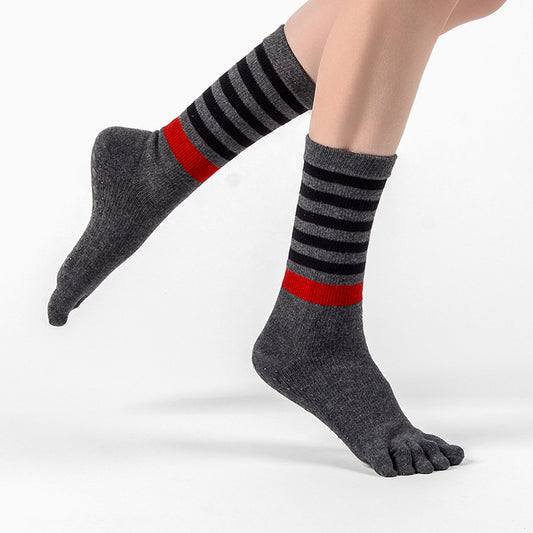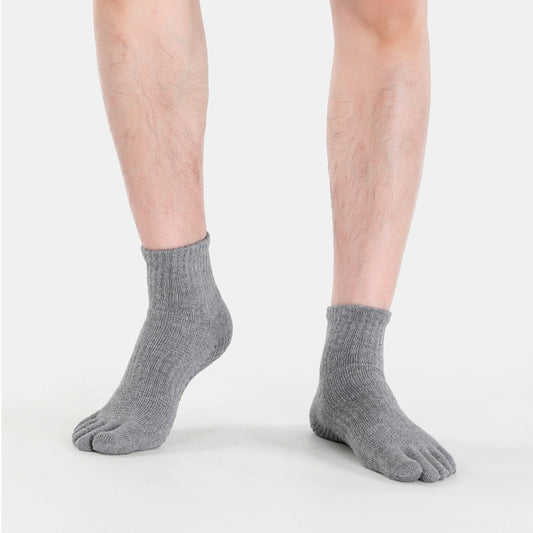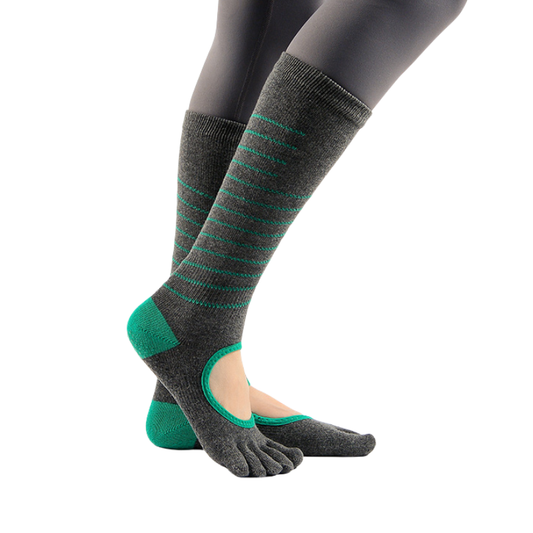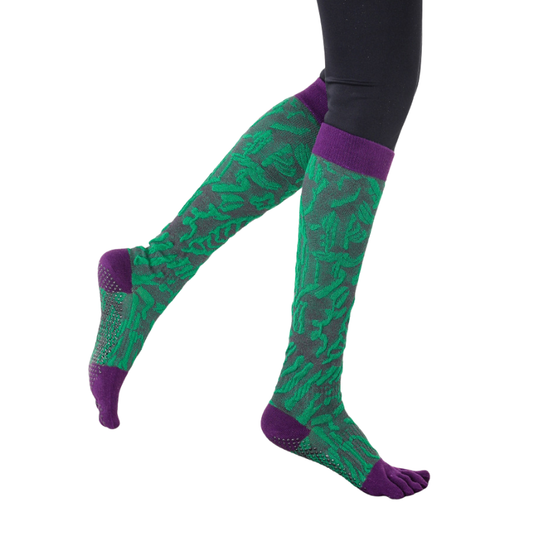As we age, maintaining balance becomes increasingly difficult—and falls are one of the leading causes of injuries among older adults. According to the Centers for Disease Control and Prevention (CDC), over 36 million falls are reported among older adults each year in the U.S., resulting in more than 32,000 deaths[^1]. In this context, non-slip socks (also known as grip socks or anti-skid socks) are gaining popularity as a simple yet effective solution for fall prevention at home.
But how safe are they really? Here’s what you need to know.
What Are Non-Slip Socks?
Non-slip socks are specialized socks designed with rubberized or silicone grips on the soles to improve traction on slippery surfaces like hardwood, tile, or linoleum. Unlike regular socks, which offer little to no friction, non-slip socks help keep seniors steady while walking—especially in settings like nursing homes or bathrooms.
Types of Non-Slip Socks
-
Full-foot grip socks: Grips cover the entire bottom, ideal for maximum traction.
-
Compression grip socks: Combine circulation support and anti-slip features.
-
Hospital socks: Usually made of terry cloth, often provided during hospital stays.
Are Non-Slip Socks Safe for Seniors?
✅ Benefits of Non-Slip Socks
-
Improved traction: Reduces the risk of slipping on slick indoor floors.
-
Comfortable to wear: Easier to put on than shoes, especially for those with arthritis or limited mobility.
-
Breathable materials: Many are made from cotton, bamboo, or wool blends that are gentle on sensitive skin.
-
Versatility: Suitable for indoor use in both private homes and assisted living facilities.
“Non-slip socks offer a safer alternative to walking barefoot or in regular socks. For seniors who don’t feel comfortable in shoes all day, these are a great choice,” — Dr. Susan Merrick, Geriatric Physical Therapist, APTA.
⚠️ Potential Risks
-
Poor fit: Ill-fitting socks may bunch or slip, ironically increasing fall risk.
-
Worn grips: The anti-slip elements can wear out over time, reducing effectiveness.
-
Limited protection: Not suitable for outdoor or high-clutter environments.
For optimal safety, ensure the socks have:
-
Full-coverage grip pads
-
Reinforced heels and toes
-
Stretchable cuffs that don't restrict circulation
How to Choose the Best Non-Slip Socks for Seniors
When shopping for non-slip socks for seniors, keep these critical features in mind:
| Feature | Why It Matters |
|---|---|
| Grip Coverage | Full-foot silicone grips reduce slipping |
| Sock Thickness | Padded soles help cushion arthritic joints |
| Compression Support | Enhances circulation and helps reduce swelling |
| Easy Wearability | Looser cuffs and stretchy fabric accommodate swollen feet |
The Zokfit checks all these boxes with its ergonomic design, ultra-soft bamboo blend, and medical-grade silicone traction pads. These socks are particularly helpful for seniors with diabetes or neuropathy, where foot sensitivity is a concern.
When Non-Slip Socks May Not Be Enough
While non-slip socks are ideal for many indoor situations, they may not offer sufficient protection in all environments. For example:
-
Outdoors: They lack support and protection from sharp or wet surfaces.
-
Heavily carpeted areas: May snag on fibers or become less effective.
-
Cluttered homes: Tripping hazards like cords or furniture require more than just foot traction.
Caregiver Tips
-
Pair socks with fall-proof home modifications: grab bars, nightlights, and non-slip mats.
-
Regularly inspect and replace socks when grips start to fade.
What the Experts Say
Multiple studies and professional organizations support the use of non-slip socks for elderly safety:
-
A 2020 study in the Journal of Geriatric Physical Therapy found that grip-enhancing socks reduced fall incidents by up to 16% in assisted living facilities2.
-
The American Podiatric Medical Association (APMA) recommends anti-slip footwear, including socks with grip, especially for seniors at high fall risk3.
These endorsements affirm that non-slip socks, when selected and used properly, can be a reliable component of a broader fall prevention strategy.
How to Care for Non-Slip Socks
To ensure they remain effective:
-
Wash in cold water and air-dry to preserve the grip pads.
-
Avoid fabric softeners which can degrade silicone grip.
-
Replace every 3–6 months, or sooner if the grips fade or fabric stretches out.
Conclusion
Non-slip socks are a safe, affordable, and comfortable solution for reducing fall risks among seniors. However, not all socks are created equal. Choosing the right pair—with full-foot grip, proper fit, and supportive materials—can make a meaningful difference in everyday mobility and independence.
Looking for the safest, most stylish option? Explore the Zokfit—specially designed to support seniors’ balance, confidence, and comfort at every step.







